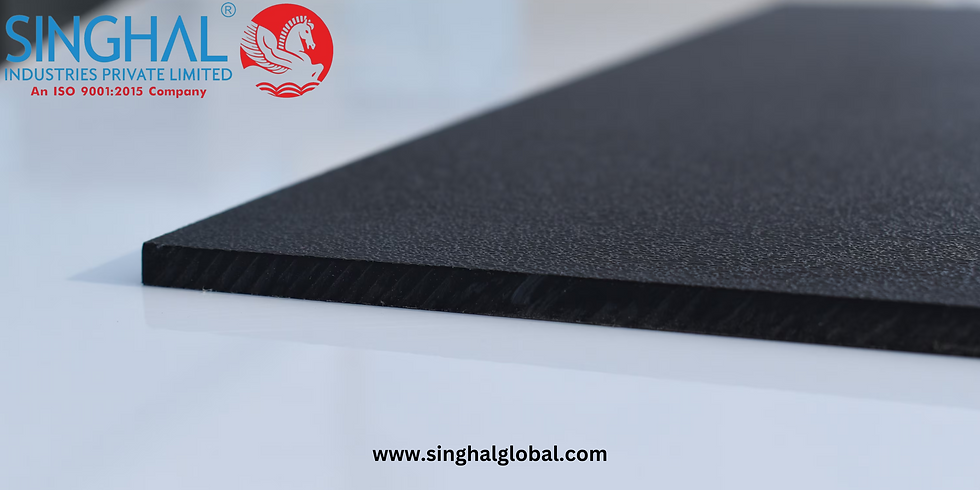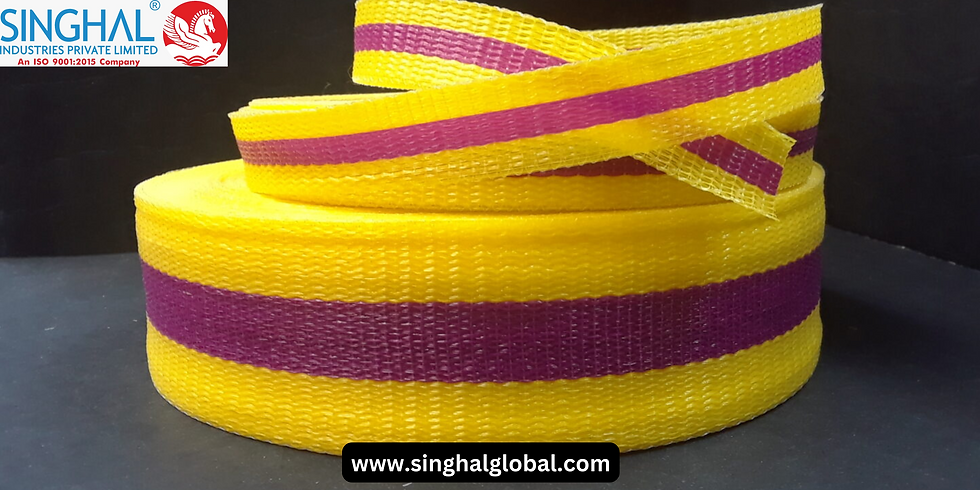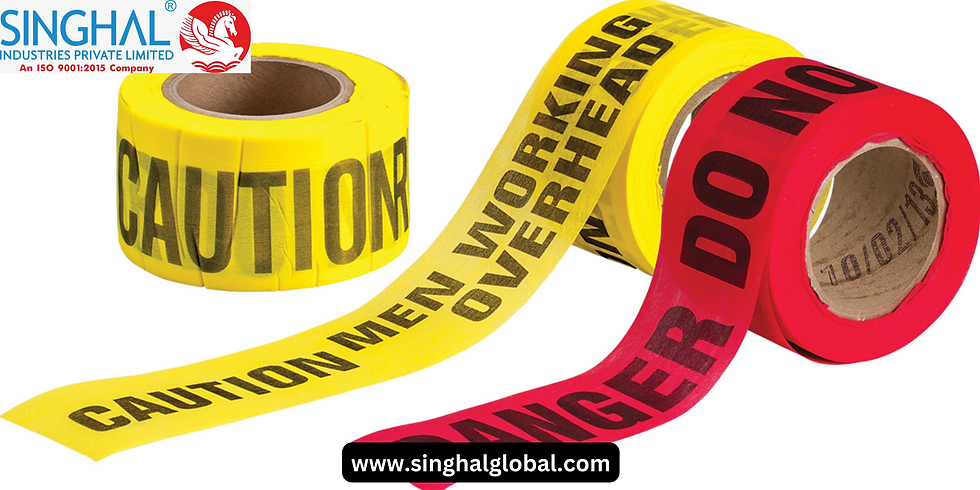The Importance of UN Certified Bags in Ensuring Safe Transportation
- Singhal Industries Private Limited
- Oct 11, 2024
- 5 min read
When it comes to transporting hazardous or sensitive materials, safety and compliance are crucial. UN certified bags are specially designed to meet stringent international safety standards, ensuring secure containment and transportation of potentially dangerous contents. In this guide, we’ll explore everything you need to know about UN certified transport bags, from their benefits and types to regulatory standards and practical applications.
What Are UN Certified Bags?
UN certified bags are containers that have passed rigorous testing to meet United Nations standards for the safe transportation of hazardous materials. These bags are specifically rated for use with dangerous goods, ensuring they can withstand various conditions without compromising the integrity of their contents.
Understanding the Concept of UN Certification
The UN certification is a globally recognized standard that certifies packaging for the safe handling and transport of hazardous substances. This certification involves a series of tests that assess the packaging’s ability to endure shocks, vibrations, temperature changes, and pressure differences.
Importance of UN Certified Transport Bags
Using UN certified transport bags offers peace of mind by ensuring compliance with international safety regulations. Businesses that deal with hazardous materials must use these certified bags to avoid fines, legal issues, and potential harm to public health and the environment.
Key Benefits of Using UN Certified Bags
Choosing UN certified bags provides a range of advantages beyond regulatory compliance. Below are some key benefits that highlight why these bags are essential for industries handling hazardous materials:
Safety and Compliance with International Standards
UN certified bags meet global standards for the transport of dangerous goods, ensuring that your company is in full compliance with regulations across different regions. This is particularly valuable for companies operating internationally.
Ensuring Environmental Protection
By using bags that adhere to UN standards, you’re also playing a role in environmental protection. UN certified bags are designed to prevent leaks and spills, reducing the risk of contamination to soil, water, and air.
Types of UN Certified Bags and Their Uses
There are various types of UN certified bags, each tailored for specific materials and uses. Let’s dive into the most common types and their applications:
UN Certified Packaging for Hazardous Materials
UN certified bags are often used for hazardous chemicals, flammable materials, and toxic substances. They’re engineered to prevent any interaction between the bag’s contents and the external environment.
UN Rated Bags for Solid Waste Transport
These bags are ideal for transporting solid hazardous waste. They’re designed to contain materials like contaminated soil, industrial waste, and medical waste without any risk of leakage.
UN Certified Bags for Liquid Substances
For hazardous liquids, UN rated packaging suppliers provide added security. They’re made with leak-proof materials and are subjected to tests that ensure they can handle liquids without rupturing.

UN Certified Packaging Standards Explained
To ensure maximum safety, UN certified bags follow specific standards and ratings. These ratings provide insight into the bag's intended use and durability.
UN Ratings and Their Significance
UN ratings are represented by numbers and letters that indicate the bag's durability, materials, and tested capabilities. Understanding these ratings is essential for choosing the right bag for your specific needs.
Markings and Symbols on UN Certified Packaging
Each certified bag includes markings that indicate its UN certification status. These symbols and codes provide information about the bag’s test level, material category, and weight limits.
Materials Used in UN Certified Bags
The durability and safety of UN certified bags come from the materials used in their construction. Let’s explore the most common materials:
High-Density Polyethylene (HDPE)
HDPE is a popular choice for UN certified bags due to its toughness and resistance to punctures. It’s also highly resistant to chemicals, making it ideal for hazardous materials.
Polypropylene (PP) Bags
Polypropylene bags are known for their strength and flexibility. They’re commonly used for dry substances and are capable of withstanding various environmental conditions without degrading.
UN Certified Transport Bags: Regulations and Guidelines
Regulations governing UN certified bags ensure that they meet safety and durability requirements for hazardous material transport.
Key Regulations Governing UN Certified Bags
UN regulations categorize hazardous materials into nine classes, each with its own packaging requirements. Ensuring compliance with these regulations is essential to maintain safety standards.
How to Comply with UN Packaging Standards
Compliance involves selecting bags that meet the necessary UN ratings for your material type and ensuring proper labeling and documentation for transportation.
Differences Between UN Certified and Regular Packaging
UN certified bags differ significantly from standard packaging in terms of safety features and cost. Understanding these differences is crucial when selecting the appropriate packaging.
Safety Features of UN Certified Bags
UN certified bags undergo tests for puncture resistance, drop durability, and pressure tolerance. Regular packaging lacks these stringent testing processes and safety features.
Cost Comparison: UN Certified vs. Regular Bags
While UN certified bags may be more costly, their enhanced safety features and compliance with regulations can save businesses from costly fines and potential hazards.
How to Choose the Right UN Certified Bag for Your Needs
Selecting the right UN certified bag involves considering several factors, from the material type to the volume of hazardous substances you’re handling.
Assessing the Type and Volume of Material
Understanding the nature of the material is key to choosing the right bag. For instance, liquids and solids may require different levels of puncture resistance and leak-proofing.
Factors to Consider When Selecting UN Rated Packaging
When selecting UN rated packaging, consider factors like weight limits, environmental conditions, and regulatory requirements.
Steps to Obtain UN Certification for Your Packaging
For businesses interested in certifying their packaging, the process involves testing, documentation, and adherence to UN standards.
Testing and Validation Process
UN certification includes rigorous testing for durability and safety. Bags must pass drop, vibration, and pressure tests to receive certification.
Certification and Compliance Documentation
Once the testing is complete, businesses must maintain documentation to prove compliance with UN certified packaging standards, which is essential for regulatory inspections.
Frequently Asked Questions About UN Certified Bags
What Are the Common Applications for UN Certified Transport Bags?
UN certified bags are commonly used in industries that handle hazardous chemicals, medical waste, and toxic substances. They’re essential for safe transport and compliance.
Are There Specific Testing Requirements for UN Certification?
Yes, UN certification includes drop tests, puncture tests, and pressure tests to ensure the packaging can handle various conditions without failure.
What Do the Different UN Ratings Indicate?
UN ratings indicate the bag’s suitability for specific types of materials, such as solids or liquids, and its ability to withstand certain environmental factors.
How Do UN Certified Bags Ensure Safety for Hazardous Materials?
They’re made from robust materials and undergo rigorous testing to prevent leaks, spills, and exposure, ensuring safety during transport.
Are There Specific Storage Requirements for UN Rated Packaging?
Yes, UN rated packaging must be stored in conditions that prevent damage and maintain the integrity of the bag and its contents.
How Do I Verify if a Bag is Truly UN Certified?
Look for the UN marking on the bag, which includes symbols and codes indicating its certification status. Documentation from the supplier can also verify authenticity.



Comments